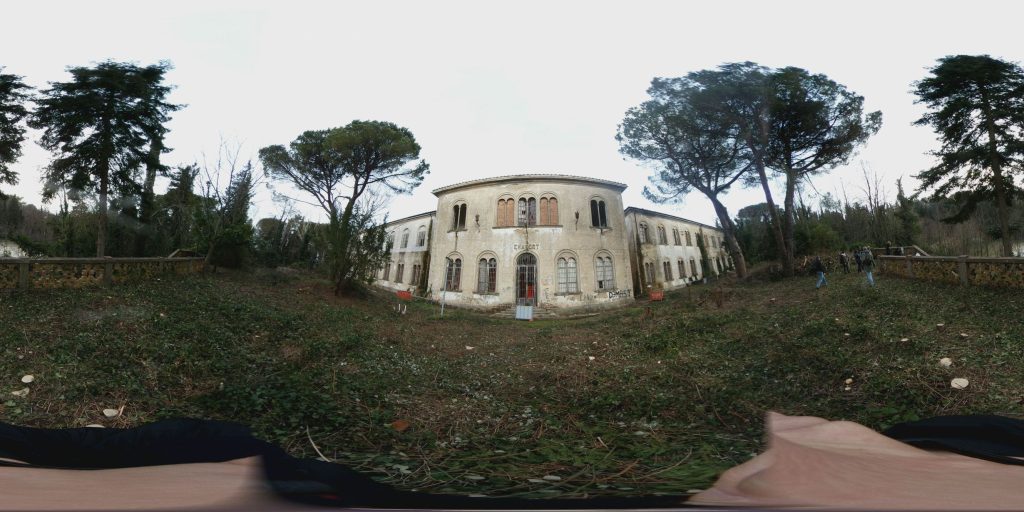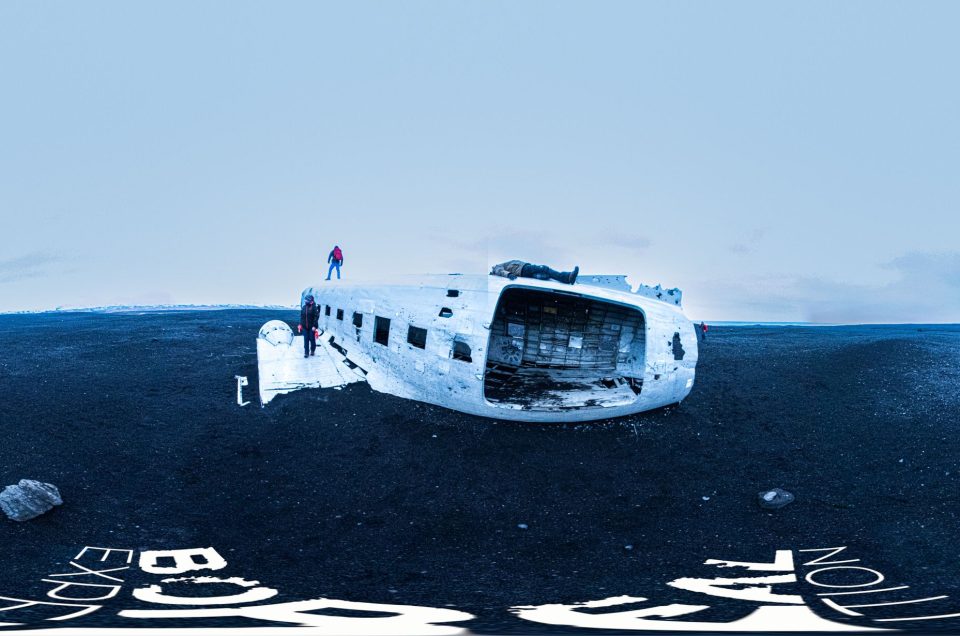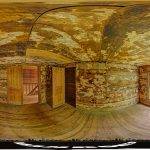Exploring the Haunting Ruins of Volterra Lunatic Asylum
Embark on a thrilling 360-degree virtual urbex adventure to the hauntingly captivating Volterra Lunatic Asylum in Italy. This once-abandoned psychiatric hospital, now accessible through stunning panoramic images on Google Maps Street View, offers urban explorers an immersive experience into its eerie corridors and forgotten rooms. Discover the chilling history and architectural decay of this iconic site from the comfort of your own home. Perfect for urban exploration enthusiasts, this virtual tour brings the mysterious allure of the Volterra Lunatic Asylum to life like never before.
Image by: Francesco Cellini
Image by: Francesco Cellini
Image by: Francesco Cellini
Nestled in the serene hills of Tuscany, the Volterra Lunatic Asylum stands as a haunting relic of a bygone era. Abandoned and left to decay, its crumbling walls whisper stories of the past, attracting history buffs and urban explorers alike. This once-thriving institution now serves as a poignant reminder of the complexities and challenges of mental health care through the ages.
A Brief History: Conception and Construction
The Volterra Lunatic Asylum, also known as the Ospedale Psichiatrico di Volterra, was established in 1888. The asylum was the brainchild of the Italian government, which aimed to address the increasing need for psychiatric care in the country. Designed by architect Luigi Castellazzi, the facility was built to be self-sufficient and isolated, embodying the era’s approach to mental health treatment.
Spanning over 350,000 square meters, the asylum included various buildings for patient accommodation, treatment, and administration. The structure’s design reflected the prevalent belief in providing a tranquil environment for patients, surrounded by nature, to promote healing.
Purpose and Operations
The primary objective of the Volterra Lunatic Asylum was to offer a safe and controlled environment for individuals with mental illnesses. During the late 19th and early 20th centuries, mental health care was often rudimentary and misunderstood. Institutions like Volterra were seen as progressive, offering hope for better treatment and understanding of psychiatric conditions.
The asylum housed a wide range of patients, from those with mild mental health issues to severe psychiatric disorders. Treatment methods varied over the years, including occupational therapy, medication, and, controversially, electroshock therapy and lobotomies. Despite the often harsh conditions, the asylum was considered advanced for its time, providing structured care and a semblance of routine for its residents.
The Decline and Abandonment
The Volterra Lunatic Asylum operated for nearly a century, but its decline began in the 1960s. Changes in societal attitudes towards mental health, advancements in psychiatric medicine, and the introduction of community-based care models rendered large asylums like Volterra obsolete. The push for deinstitutionalization meant that many patients were moved to smaller, more humane facilities or treated on an outpatient basis.
By the 1970s, the asylum’s population had dwindled, and its facilities were deteriorating. In 1978, Italy passed Law 180, also known as the Basaglia Law, which mandated the closure of psychiatric hospitals across the country. This law was named after Franco Basaglia, a psychiatrist who championed the rights of mental health patients and advocated for more humane treatment methods. As a result, the Volterra Lunatic Asylum was officially closed in 1978, leaving the once-bustling complex to the ravages of time.
Haunting Remnants: Urban Exploration
Today, the abandoned Volterra Lunatic Asylum is a magnet for urban explorers and history enthusiasts. The site’s eerie atmosphere, combined with its historical significance, offers a unique glimpse into the past. As you wander through the dilapidated corridors and overgrown courtyards, you can almost hear the echoes of the past—voices of patients and staff who once inhabited this vast institution.
Graffiti and artwork now adorn the walls, a testament to the passage of time and the creative spirit of those who venture into this haunting space. Despite its state of decay, the asylum retains a certain beauty, with nature slowly reclaiming the structures, creating a juxtaposition of man-made and natural elements.
Historical Significance
The Volterra Lunatic Asylum is more than just an abandoned building; it is a symbol of the evolution of mental health care. Its history reflects broader societal changes, from the initial attempts to understand and treat mental illness to the eventual realization of the importance of patient rights and humane treatment.
Institutions like Volterra played a crucial role in the development of psychiatric care, and their remnants serve as reminders of the strides made and the challenges that remain. For historians and researchers, the asylum offers invaluable insights into the practices and philosophies of past eras.
The Future of Volterra Lunatic Asylum
The future of the Volterra Lunatic Asylum remains uncertain. There have been various proposals over the years to repurpose the site, including converting it into a museum, cultural center, or even luxury apartments. However, these plans have yet to come to fruition, leaving the asylum in a state of limbo.
Local authorities and preservationists face a challenging task: balancing the need to preserve the site’s historical integrity with the potential for redevelopment. For now, the asylum continues to stand as a silent sentinel, bearing witness to the passage of time and the ever-changing landscape of mental health care.
Conclusion
The Volterra Lunatic Asylum is a poignant and powerful reminder of the complexities of mental health treatment throughout history. Its abandoned halls and decaying structures offer a hauntingly beautiful landscape for urban explorers and history enthusiasts. As we reflect on its past, we gain a deeper understanding of the progress made in psychiatric care and the importance of continuing to advocate for humane treatment for all individuals.
For those with a passion for history and a curiosity for the unknown, the Volterra Lunatic Asylum is a must-visit destination, offering a unique and immersive glimpse into a world long forgotten but never truly gone.
If you liked this blog post, you might want to read about the Larundel Mental Asylum in Australia, the Sanatorium Medea in the Republic of Georgia or the St. Elizabeth’s Hospital in Washington D.C.

A 360-degree panoramic image outside one of the buildings at Volterra Lunatic Asylum in Volterra, Italy. Image by: Image by: Francesco Cellini
Do you have 360-degree panoramic images captured in an abandoned location? Send your images to Abandonedin360@gmail.com. If you choose to go out and do some urban exploring in your town, here are some safety tips before you head out on your Urbex adventure.
Unlock the secrets of exploration by diving into precise GPS data available exclusively for an array of hidden gems and hundreds of other captivating sites, all within our members’ section. By investing in a Gold Membership, you’re not just gaining access; you’re securing a key to a vast, global archive of abandoned, untouched, and mysterious locations waiting to be discovered. Embark on your adventure with confidence, knowing every corner of the world can be within your reach. Don’t just observe—explore, discover, and claim the extraordinary journey that lies ahead with our treasure trove of world secrets. Subscribe now and transform the way you see the world!
If you want to start shooting 360-degree panoramic images, you might want to look onto one-click 360-degree action cameras.
Click on a state below and explore the top abandoned places for urban exploring in that state.






